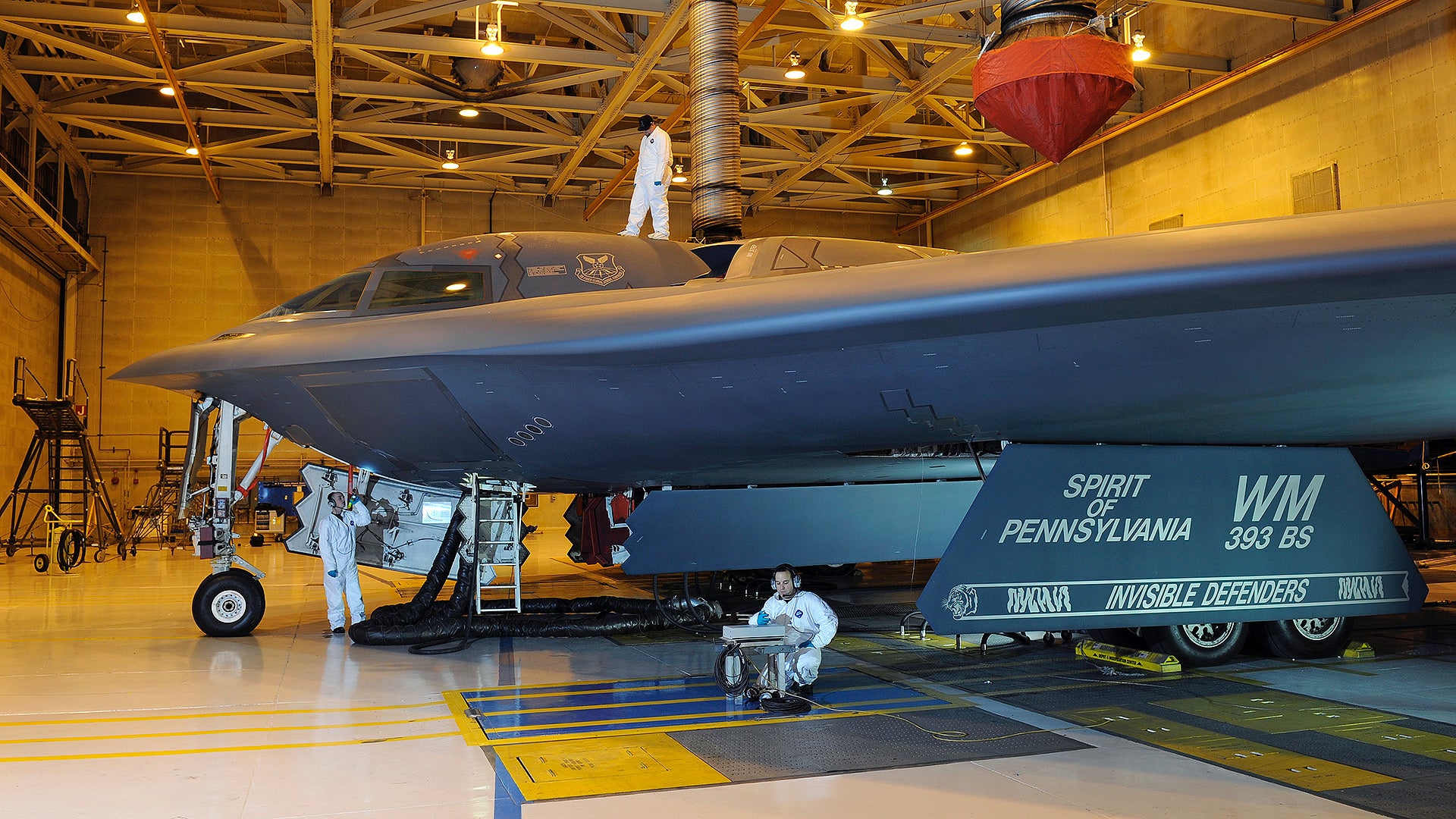In a surprising turn of events, the United States government is calling upon its country’s industry to reverse engineer components for the Air Force’s B-2 Spirit stealth bomber. An official call for this highly unusual kind of assistance was put out today on the U.S. government’s contracting website beta.SAM.gov.
Mark Thompson, a national-security analyst at the Project On Government Oversight, brought our attention to the notice, which seeks an engineering effort that will reverse engineer key parts for the B‐2’s Load Heat Exchangers. While it is not exactly clear what part of the aircraft’s many complex and exotic subsystems these heat exchangers relate to, the bomber has no shortage of avionics systems, for example, which could require cooling.
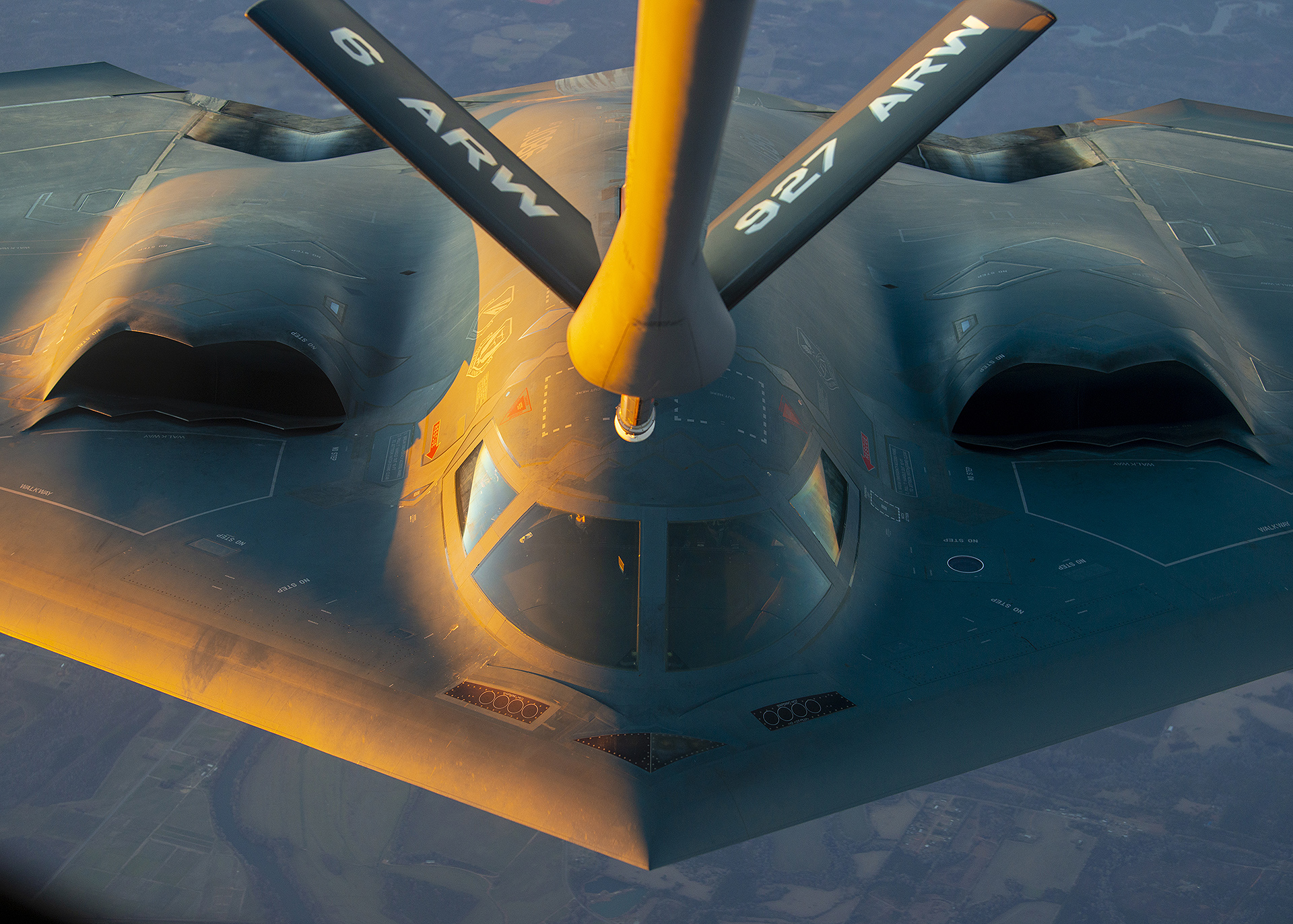
The notice does provide details of what it expects engineers do to support the upkeep of the silver-bullet stealth bomber fleet:
“This engineering effort is to reverse engineer the core of the B‐2 Load Heat Exchangers, develop disassembly process to remove defective cores, develop a stacking, vacuum brazing, and welding process to manufacture new heat exchanger cores and to develop a welding process to install the new cores on existing B‐2 Load Heat Exchangers. The requirement includes reverse-engineering the re‐core process for the B‐2 Load Heat Exchangers. The B‐2 Load Heat Exchanger (NSN 1660‐01‐350‐8209FW) uses air and Ethylene Glycol Water (EGW) liquid to produce cold air for the cooling system.”
“The deliverables will include all technical data related to the heat exchanger disassembly, all technical data related to the cores, all technical data related to the stack up, vacuum brazing, and installation of the cores on existing units. The deliverables will also include all technical data related to the tooling needed for disassembly, core stack up, core vacuum brazing, post braze processing, core installation. Two (2) government B‐2 Sink Heat Exchangers will be provided as government-furnished property (GFP) to prototype this effort. The two (2) prototype units will be delivered at the completion of the contract to return the GFP. The final design shall meet the testing qualifications specified in the government technical orders (TO). Finally, a qualified source of repair shall be provided that is capable of remanufacturing the B‐2 Load Heat Exchangers per the aforementioned deliverables.
The second paragraph makes it abundantly clear that this is a classic reverse engineering effort, in which the technology required to be copied is supplied for analysis before the procedures involved in their original production are replicated.
While it’s hard to say exactly why this approach is being taken now, it indicates that the original plans for these components are unavailable or the manufacturing processes and tooling used to produce them no longer exists. This could be the result of them having been so secretive that, at some point, they were inadvertently destroyed altogether. They could also have been simply misplaced, or the parts may have been produced by a smaller contractor that has long since disappeared, taking the bespoke tooling with it.

This should also be seen in the context of the unique requirements of sustaining the B-2 fleet, 19 of which are combat-coded and only 20 exist, in total. In this previous feature, The War Zone looked at how the bombers each undergo a programmed depot maintenance cycle every nine years, including a general overhaul and a complete reapplication of the aircraft’s special radar-absorbing material skin and paint job. It’s a process that already makes use of innovative processes, such as robotic systems to help install parts and apply coatings, to help improve quality control and reduce the frequency of depot visits.
Of course, recent developments in technology potentially make the process of reverse engineering much quicker and more reliable, too. Earlier this year, it was reported that the Air Force’s Rapid Sustainment Office (RSO) was looking to industry for a “cutting-edge, automated 3D scanning system,” specifically intended to replicate aircraft parts that are no longer in production, including at maintenance depots.
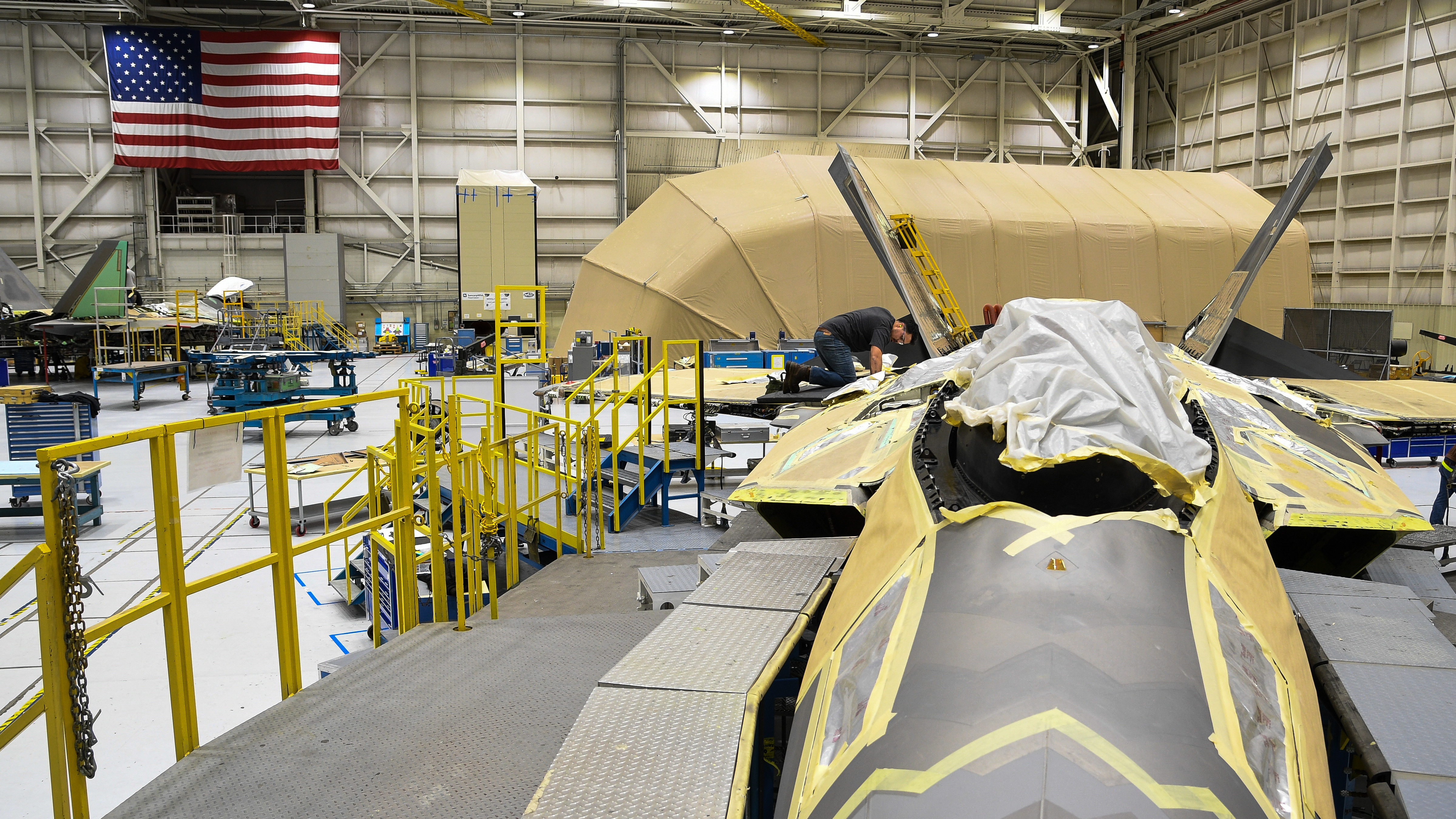
In the case of the B-2 scenario, we might imagine how a 3D scanner would be used to scan the original parts and produce a virtual model. From this, at least in part, would then be derived a new set of blueprints that could be reproduced by machine processes and other current manufacturing techniques, yielding a new source of heat exchangers required for ongoing sustainment.
One of the B-2’s stablemates in Air Force Global Strike Command, the veteran B-52H Stratofortress, has also benefitted from reverse engineering. In this case, Mission Support Inc. received an Air Force contract to overhaul the aircraft’s engine bypass ducts. With insufficient technical data, the company turned to modern computer-aided design and computer-aided manufacturing (CAD/CAM) technology to ensure the new components fitted correctly.
Similar initiatives are already underway within the Air Force. The 402nd Electronic Maintenance Group Reverse Engineering Avionics Redesign and Manufacturing team, or REARM, is found at Warner Robins Air Logistic Complex (ALC) at Robins Air Force Base, Georgia. Its role is to ensure spare parts supply for older weapons systems.
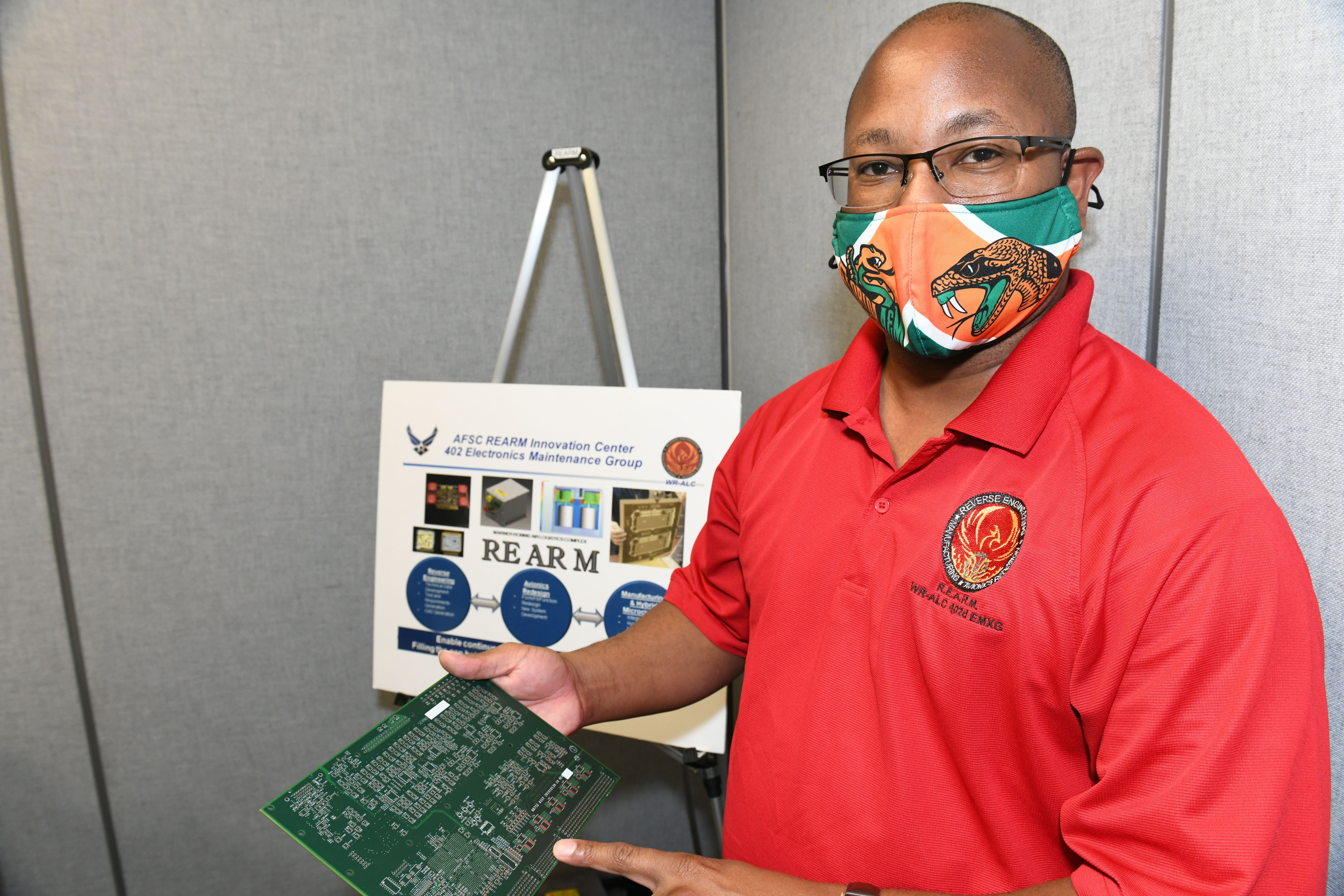
“The first part of reverse engineering is to do an obsolescence study,” Damon Brown, 402nd EMXG REARM chief explained in an Air Force press release. “If we cannot get or find the parts to fix a piece of equipment or replace it, then we go back to the customer or the supply chain with this item and ask them what they want us to do.”
Working on behalf of the Air Force Sustainment Center, similar REARM teams are also found at Oklahoma City ALC at Tinker Air Force Base, Oklahoma, and at Ogden ALC at Hill Air Force Base, Utah.
Indeed, as the average age of the Air Force fleet continues to increase, there are only likely to be more such requirements for parts that are long out of production. Before he stood down, the former Assistant Secretary of the Air Force for Acquisition, Technology, and Logistics, Will Roper, told
Air Force Magazine of his desire for a “digital representation of every part in the Air Force inventory.”
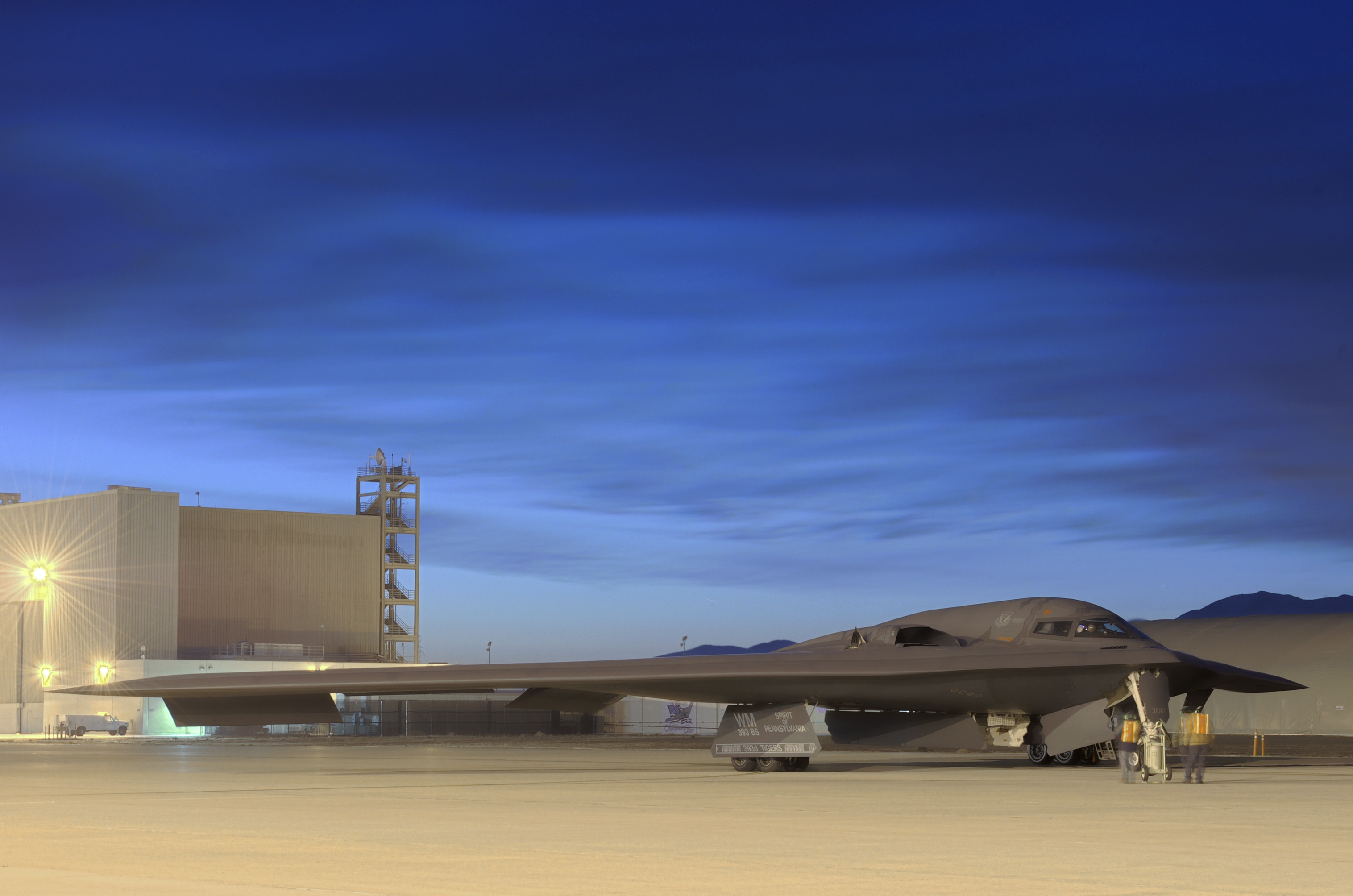
During his tenure, Roper was also keen to increasingly leverage commercial industry practices into this kind of military sustainment, with a view to driving down sustainment costs.
“We want to reverse-engineer parts that we may not have the designs for anymore,” Roper said. “We want to look at repeatability of parts so that we’re not critically coupled to an individual printing machine. And we want to look at the entire process of what it takes to get a novelty manufactured part onto a critical mission airplane or satellite.”
The Rapid Sustainment Office’s Advanced Manufacturing Olympics last October saw plenty of 3D printing, but also called upon reverse engineering. In one event, teams had to replicate as many parts as possible from a box of components using reverse engineering and modeling.
All in all, the search for reverse-engineered components for the B-2 fleet is keeping with the Air Force’s current trend of moving toward the latest digital engineering and manufacturing techniques to help ensure its aircraft can be sustained not just easier and more cheaply, but in some cases, possibly at all. Above all else, it underscores how America’s tiny fleet of aging stealth bombers, which were largely built on highly experimental technology at the time of their fielding, is a uniquely obvious candidate for using reverse engineering to keep it flying. For something as critical as a heat exchanger, which is essential to keeping the jet in the air, these new processes and techniques may have come just in time.
Contact the author: thomas@thedrive.com
